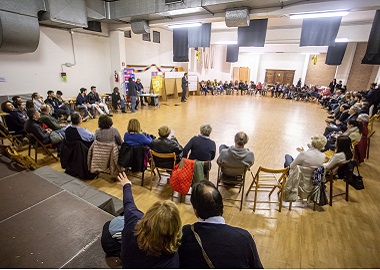Fondazione per l’Innovazione Urbana (FIU)
Created on 27-05-2024 | Updated on 24-10-2024
In this strategic experiment pioneered by the city of Bologna, the principles of the urban commons are able to be institutionalised by political advocacy groups and active citizens who are grounded in the territory of their respective community, while also able to reach the level of municipal process.The Fondazione per l’Innovazione Urbana (FIU) was founded by the city of Bologna to promote "relationships between local government, universities, firms, the tertiary sector and citizens" (FIU, 2024). The goal has been to produce better communication instruments and to foster social equity, cultural innovation and the transition to climate neutrality by identifying the most effective methodologies for citizen participation in local urban regeneration stratefies.
Instrument
Regulation, incentives
Issued (year)
-
Application period (years)
-
Scope
Country
Target group
All people
Housing tenure
-
Discipline
Public policy
Object of study
Instrument
Description
In 2003 Urban Centre Bologna was formed to communicate with citizens how the city was changing regarding a new mobility masterplan and other urban planning strategies promoted by the municipality. In 2014, the city council passed the “regulation on public collaboration between citizens and the city for the care and regeneration of urban commons,” which allowed citizens and private organizations to sign collaboration pacts with the city in order to improve public space, green areas, and abandoned buildings. In 2017, Bologna’s government launched a participatory budgeting process, inviting citizens to submit proposals for projects that would engage residents and reimagine the urban commons (Cities of Service, 2024).
As an evolution of these efforts, the Fondazione per l’Innovazione Urbana (FIU) was founded by the city of Bologna to promote "relationships between local government, universities, firms, the tertiary sector and citizens" (FIU, 2024). The goal has been to produce better communication instruments and to foster social equity, cultural innovation and the transition to climate neutrality by identifying the most effective methodologies for citizen participation in local urban regeneration stratefies. The FIU uses different tools to foster citizen participation and collaboration with other local stakeholders and academic/research organisations in decision-making processes. It is structured by different research centres and departments working with the underlying regulatory framework titled the Urban Innovation Plan, linked with the Participatory Budget, which connects public policy with collaborative governance/co-production methods.
By using the Urban Living Lab methodoly, the aim was to stimulate and guide experimentation and innovation projects in the regeneration of spaces and buildings of public interest. The FIU organised District Laboratories (FIU, 2024) and used participation and co-production to reveal priorities and lead to participatory budgeting for making improvements to public spaces, organising events to accompany and strengthen the transformation of public spaces, collaboratively and based on local needs (D’alena et al., 2018).
For the year 2023, the city provided a budget of three million euros (five hundred thousand euros per neighbourhood) to fund the proposals born out of the visions of active citizens. Proposals were submitted online or at neighbourhood workshops scheduled in the evenings on specific days. After this first stage, the co-design phase finalised the proposals with the support of municipal technical staff and finally the voting phase outlined the six winning projects to be undertaken (Bologna Comune, 2024). The proposals include cultural, artistic and material interventions for regeneration of urban spaces, the enhancement of green areas or public gardens and in general to promote the right to urban public spaces which are open and collaborative.
In this strategic experiment pioneered by the city of Bologna, the principles of the urban commons are able to be institutionalised by political advocacy groups and active citizens who are grounded in the territory of their respective community, while also able to reach the level of municipal process. This has been possible due to the municipality guaranteeing the conditions for intermediaries to have access to several financing tools that facilitate network building opportunities and the up-scaling of local actions.
Alignment with project research areas
This case study aligns with the Community Participation research area and it's sub-category Community Planning regarding public-private partnerships to support urban regeneration programmes. It also aligns with Policy and Financing as the Bologna model implements innovative local governance frameworks allowing for innovative regeneration projects to emerge.
* This diagram is for illustrative purposes only based on the author’s interpretation of the above case study
References
Bologna Commune (2024, May), The 2023 path, www.comune.bologna.it/partecipa/bilancio-partecipativo?sect=le-4-fasi-del-bilancio-partecipativo
Cities of Service (2024, May), Co-Creating Urban Commons, www.citiesofservice.jhu.edu/resource/co-creating-urban-commons-bologna-italy/#:~:text=In%202014%2C%20the%20city%20council,green%20areas%2C%20and%20abandoned%20buildings.
D’alena, M., Beolchi, S., & Paolazzi, S. (2018). Civic imagination office as a platform to design a collaborative city. Proceedings of the ServDes. 2018 Conference, 18-20 June.
FIU, (2024, May), Neighborhood workshops, www.fondazioneinnovazioneurbana.it/progetto/labquartiere
Related vocabulary
Collaborative Governance
Area: Community participation
Created on 26-10-2023
Read more ->

